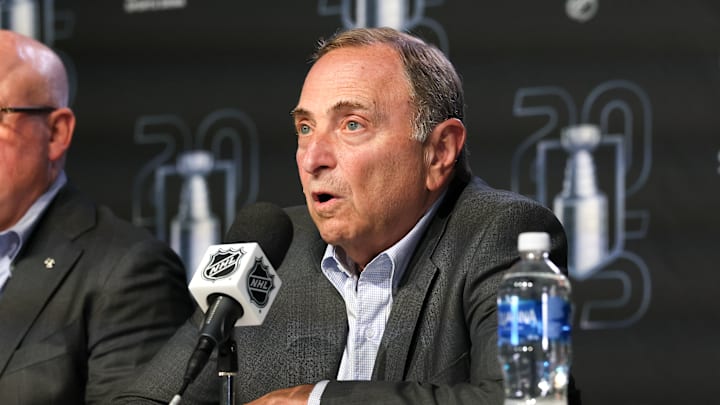The 2004–05 NHL lockout marked a turbulent chapter in league history, but in retrospect, it was a necessary reckoning to ensure the sport's long-term financial sustainability.
The lockout introduced a salary cap, fundamentally restructured the financial architecture of team operations, and ushered in a series of on-ice rule changes—many of which continue to define the modern game.
Had the salary cap never been implemented, the NHL might well have teetered on the brink of financial collapse—or worse, faced the prospect of fragmentation akin to the schism that once plagued American open-wheel racing with the split between CART and IndyCar. In all likelihood, the league's long-term viability would have been imperiled.
Disaster
The most consequential outcome of the 2004–05 NHL lockout was the implementation of a salary cap. While the agreement faced no shortage of detractors, especially among those who viewed it as an inequitable concession to ownership, a sober analysis reveals the necessity of the reform.
Prior to the cap, some franchises were allocating as much as 76 percent of their annual revenue toward player salaries—an unsustainable model that culminated in collective losses reportedly nearing $273 million annually.
Even amid such financial distress, demands for higher player compensation persisted. In this context, Commissioner Gary Bettman, though a frequent target of public ire, acted with fiscal prudence.
While he remains fair game for criticism on other fronts, this was not one of them. The cap, though controversial, was indispensable to the league’s survival.
Examples of overpay
We’d be remiss if we didn’t start this conversation with the Detroit Red Wings. By 2002, the Wings carried a team payroll exceeding $65 million—more than double the operating budgets of many small-market teams.
A significant portion of this expenditure was allocated to aging veterans whose compensation reflected past achievements more than future value. This unsustainable financial model eventually collapsed.
Following a contract dispute at the outset of the 1997–98 season, Sergei Fedorov—then a restricted free agent—signed a lucrative offer sheet with the Carolina Hurricanes valued at up to $38 million The Red Wings ultimately matched the offer on February 26, 1998, thereby concluding Fedorov’s holdout and securing his return to the roster. The deal also included a $12 million signing bonus plus other performance-based clauses.
Dominik Hasek signed a one-year, $8 million deal during free agency in 2001. This doesn’t sound like a whole lot. However, Hasek was commanding top dollar in an era when elite goaltenders weren’t getting paid the same as skaters. Of course, that is not the case in today’s game.
The New York Islanders offered perhaps the most egregious example of pre-lockout financial excess when they signed Alexei Yashin to a 10-year, $87.5 million contract in 2001. At the time, this unprecedented deal distorted market expectations, establishing an unsustainable benchmark for player compensation and accelerating the league's trajectory toward a labor crisis.
The contract was ultimately bought out in 2007—an outcome that proved ironic, as Yashin was no longer playing in the NHL by then. He concluded his professional career in Russia, appearing for three different teams, beginning with the final season of the Russian Superleague (RSL) before the league transitioned into the Kontinental Hockey League (KHL).
With that said, look at the MLB right now, a number of teams are paying every year for players who haven't touched a baseball diamond in years. At some point, this model is going to collapse, but when?
Ultimately, the 2004–05 lockout averted the financial ruin or relocation of several franchises. The Nashville Predators, once teetering on the brink of a move from the heart of country music to Hamilton, Ontario, were spared such a fate.
Likewise, the Pittsburgh Penguins narrowly escaped relocation—an outcome that would have been catastrophic for both the franchise and the sport. Perhaps most consequentially, the lockout preserved the circumstances that allowed Sidney Crosby and Evgeni Malkin to join Pittsburgh, thereby altering the trajectory of hockey history forever.
Is an MLB lockout next?
Major League Baseball revenues have indeed reached an all-time high. Last season, the league reported a record $12.1 billion in gross revenue. Yet this milestone masks a troubling reality: several franchises are struggling to remain financially viable.
The central question becomes—does the league care? There are signs that it does. Commissioner Rob Manfred has openly floated the idea of instituting a salary cap, a controversial measure that has drawn the ire of players like Bryce Harper, who did not deny reports that he recently lashed out at Manfred over the proposal.
As history reminds us, the NHL’s 2004–05 lockout arrived just in time to curb runaway spending before it destabilized the league entirely. MLB may already be beyond that point. Without meaningful financial reform, a labor stoppage appears increasingly likely.
The financial volatility extends beyond player salaries. In 2023, Diamond Sports Group filed for Chapter 11 bankruptcy, leading to the termination of its contract with the Arizona Diamondbacks. In response, Major League Baseball assumed control of the team’s television production and distribution.
But Arizona wasn’t alone—other franchises, including the Cleveland Guardians, Detroit Tigers, and Kansas City Royals, were also impacted. These broadcast disruptions could produce significant revenue shortfalls and operational instability, potentially requiring league intervention. However, it remains unclear whether MLB has the appetite—or the resources—to bail out every financially troubled team.
This brings us to a broader structural issue: competitive imbalance. When a single team—most notably, the Los Angeles Dodgers—can outspend the rest of the league by staggering margins, what kind of competitive ecosystem remains? Without systemic reform, the league risks becoming an oligarchy of super-clubs, eroding fan engagement in smaller markets.
It may take time, but if MLB experiences a full-season shutdown akin to the NHL’s in 2004–05, we may finally see the parity baseball fans have long been waiting for. Until then, fans of long-neglected franchises—such as this writer, a Colorado Rockies supporter—have little reason to stay invested in the status quo anyway.
More from Octopus Thrower
